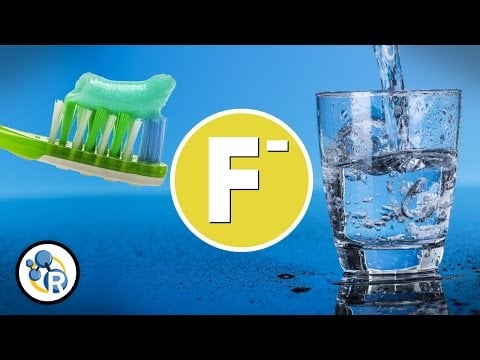If you’re worried about fluoride sneaking into your tap water, you’re not alone.
While fluoride can help protect teeth, too much of it has been linked to health risks — and the truth is, most people have no idea how much they’re drinking every day.
The good news? Removing fluoride from your water isn’t complicated. And with the right system, you can drink cleaner, safer water without second-guessing every sip.
Here’s what you need to know — and how to take action today. 💧
🧠 Quick Takeaways:
- ✅ Fluoride Can Help or Hurt — Small doses strengthen teeth, but too much can cause serious health issues.
- ✅ Most U.S. Water Is Fluoridated — Over 70% of Americans drink water with added fluoride.
- ✅ Too Much Fluoride = Potential Risks — Dental fluorosis, thyroid issues, and more.
- ✅ Filtering Works — Reverse osmosis, activated alumina, and bone char are top options.
- ✅ Testing First Helps — Lab kits can confirm your exact levels before you invest.
💧 Why Is Fluoride in Our Water Anyway?

Fluoride can be found in most ground and surface water, naturally. It’s been added to U.S. drinking water since the 1940s to help reduce cavities — but the story isn’t that simple.
Here’s the quick version:
- 🦷 Cavity Fighter: In the 1940s, researchers noticed towns with higher natural fluoride had fewer cavities.
- 🏛️ Public Health Move: Grand Rapids, Michigan became the first city to add fluoride to water in 1945.
- 🧪 Big Assist from Industry: A lead chemist at ALCOA (an aluminum company) helped promote fluoridation.
- ❓ Controversy Today: New research questions if the long-term risks outweigh the benefits — especially for kids.
👉 Learn about the history of fluoridation here.
💬 Good to Know: Today, about 70% of Americans drink fluoridated tap water — but many are now choosing to filter it out.
🧠 Health Risks of Too Much Fluoride
While fluoride can help prevent cavities in small amounts, too much over time can quietly cause some serious health issues — especially for kids and sensitive groups.
Here’s a quick breakdown:
| 🧪 Health Concern | ⚡ Why It Matters |
|---|---|
| 😬 Dental Fluorosis | White spots, staining, or pitting on teeth from overexposure during development |
| 🦴 Skeletal Fluorosis | Joint pain, stiffness, and bone fragility from long-term high intake |
| 🧠 Neurological Risks | Studies link high fluoride levels to potential cognitive impacts in children |
| 🦋 Thyroid Dysfunction | Possible interference with thyroid hormone production at higher exposures |
💬 Good to Know: Moderate fluoride levels are still considered safe by most health authorities — but if you’re stacking exposure from water, toothpaste, food, and other sources, it’s smart to stay mindful. Limiting excess is all about long-term protection. 🛡️
💧 Why People Choose to Remove Fluoride

Cutting fluoride levels isn’t just about avoiding risks — it’s about protecting long-term health:
| ✅ Benefit | Why It Matters |
|---|---|
| Reduce Dental Fluorosis | Minimizes risk of white spots, staining, and enamel damage |
| Protect Bone Health | Lowers risk of skeletal fluorosis and fractures |
| Support Thyroid Function | Helps maintain balanced hormone production |
| Boost Brain Development | Encourages healthy cognitive growth in children |
💬 Good to Know: Some fluoride exposure is unavoidable — but limiting it wherever possible gives your body a serious advantage long-term.
🚰 Best Ways to Remove Fluoride From Water

If you’re serious about cutting fluoride from your tap, the right filtration method makes all the difference. Some systems work better (and faster) than others.
Here’s a quick breakdown:
| Filter Type | Best For | Strengths |
|---|---|---|
| 💧 Reverse Osmosis (RO) | Under-sink & Whole-House | Removes 95%+ of fluoride and other heavy metals |
| 🧪 Activated Alumina Filters | Undersink and Whole-House | Targets fluoride, arsenic, and lead |
| 🔥 Bone Char Filters | Undersink and Whole-House | Removes fluoride, heavy metals, and some radiologicals |
| 🛡️ Distillation Systems | Countertop Small-Batch Purifiers | Removes almost all contaminants including fluoride |
💬 Quick Tip: No matter which system you choose, make sure it’s certified for fluoride removal — not just “general contaminant” claims. Systems like reverse osmosis or activated alumina are your best bet for serious protection.
🛠️ Key Considerations:

Picking a fluoride filter isn’t one-size-fits-all. A few quick questions can help you find the right fit without wasting money or time.
| 🧙♂️ Factor | 🔥 Why It Matters |
|---|---|
| 💸 Budget | Some systems cost more upfront but save over time. |
| ⚡ Effectiveness | Not all filters remove the same amount — check reviews and certifications. |
| 🛠️ Maintenance Needs | Some filters need regular cartridge swaps; others are set-it-and-forget-it. |
| 🛏️ Daily Water Use | Make sure the system you pick can handle your household’s water needs. |
| 🌎 Eco Impact | Choose systems with lower waste if you’re aiming for sustainability. |
| 💧 Broad Contaminant Removal | Bonus points if the filter tackles more than just fluoride (like lead or chlorine too). |
💬 Good to Know: Choosing a fluoride filter is like picking the right tool for the job — not just about removing one thing, but about finding a solution that fits your home, your habits, and your future plans.
🧪 How To Test Your Water for Fluoride

If your water comes from a public utility, you can usually find fluoride levels listed in the annual Consumer Confidence Report (CCR). But if you have a private well—or just want to double-check—independent testing is your best bet.
Here’s how to get the clearest results:
| Testing Method | Pros | Cons |
|---|---|---|
| Certified Lab Testing | Most accurate; can test for fluoride plus other contaminants | Results take a few days and cost more than DIY kits |
| Home Test Kits | Fast, easy, and affordable for basic screening | Less precise than lab results; can miss subtle problems |
💬 Pro Tip: If you want certified results without the guesswork, check out trusted options like this water testing guide for fluoride and beyond.
🧹 Easy Ways to Reduce Fluoride Exposure

Even if you’re not ready to install a full filtration system yet, you can still cut down on daily fluoride intake with a few smart habits.
Here’s where to start:
| 💡 Tip | ⚡ How It Helps |
|---|---|
| 💧 Choose Bottled Water Carefully | Some bottled brands contain less fluoride — always check the label. |
| 🪥 Use Fluoride-Free Toothpaste | Especially important for young kids who might swallow toothpaste. |
| 🥦 Eat Organic Produce | Reduces exposure from fluoride-based pesticides used on conventional crops. |
| 🍵 Switch to Herbal Teas | Tea plants naturally absorb fluoride — herbal varieties typically have lower levels. |
💬 Good to Know: While these steps help limit exposure, they don’t remove fluoride from your drinking water — using a reliable filtration system is still the best long-term solution for peace of mind.
🧼 Final Thoughts
Removing fluoride doesn’t have to be complicated.
- ✅ Start by testing your water.
- ✅ Choose a system that fits your home and your health goals.
- ✅ Enjoy clean, worry-free drinking water every day.
Because safer water isn’t just better — it’s essential. 💧✨
 122 people found this helpful. Was this guide helpful to you?
122 people found this helpful. Was this guide helpful to you? 


